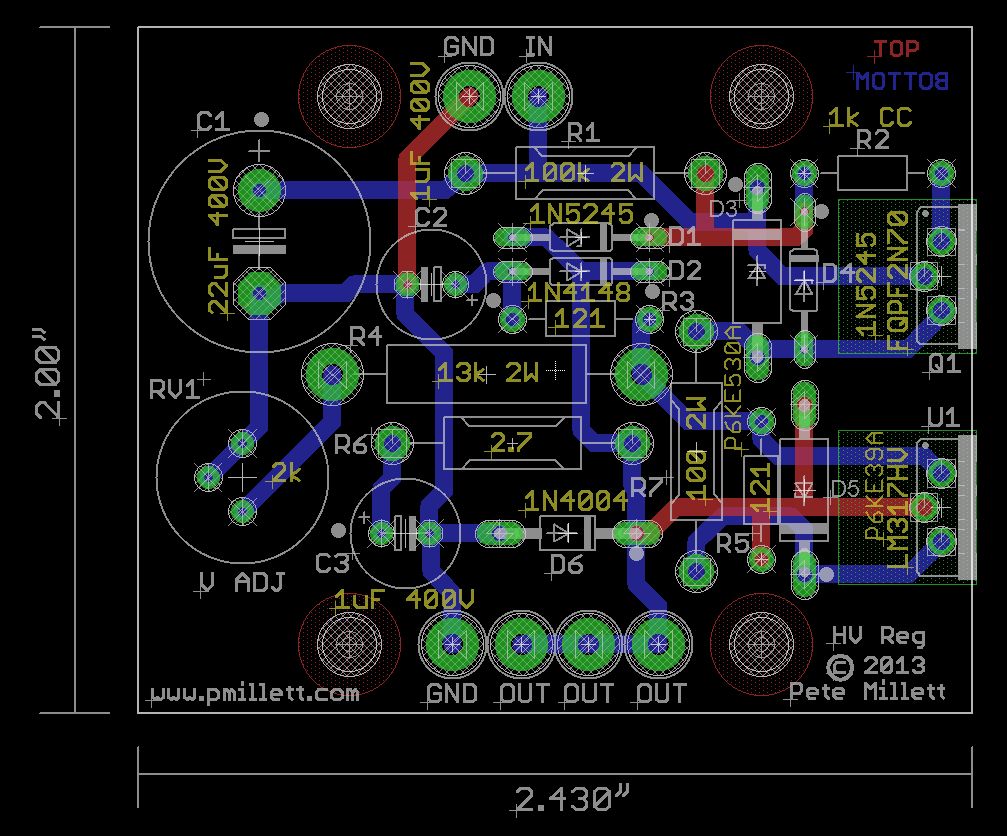
ATTENTION! It's been found that if you are drawing less than 5mA through the regulator, its stability is marginal. If you need very low current, change C3 to 2.2uF.
This is an implementation of a "Maida-style" high voltage floating regulator. Here is the schematic (or download it as a PDF file):

This regulator is of the type originally shown in an application note by Michael Maida, then of National Semiconductor, in 1980. It showed a circuit capable of regulating high voltage using the LM317. The application note can be found on Texas Instruments' web site (TI bought National) here.
This version is similar, but uses a power MOSFET instead of a bipolar power transistor.
This type of regulator is typically used to provide a regulated voltage for the screen grid of a pentode, or B+ in a preamp. It can also be used to provide B+ in a power amp (though I personally think this is unnecessary in a power amp).
Since the regulator significant dissipates power - (Vin - Vout) * Iout watts, the power MOSFET needs a heatsink, possibly substantial in the case of large output current. I designed this PCB to fit the Landfall Systems heatsink, which allows you to get the heat up and out of the chassis. This heatsink can easily dissipate 10 watts or more, depending on how hot you want to allow it to be. Of course, you can also fabricate your own heatsink if you want.
I also put the LM317 on the heatsink. This is not because it dissipates power - it only drops a small percentage of the voltage across the regulator - but to take advantage of its overtemperature shutdown feature. If the heatsink gets too hot, the LM317 will shut down.
Here is the PCB, available on eBay:

The assembled PCB installed onto the heatsink:
Contact Landfall about the heatsink. You can also get a prototype bard from them that lets you build your own circuit using this heatsink.
Note that you need to space the power devices such that the bottom of the plastic body is about 1/4' above the PCB, so that the heatsink and clips correctly mate with the heatsink.